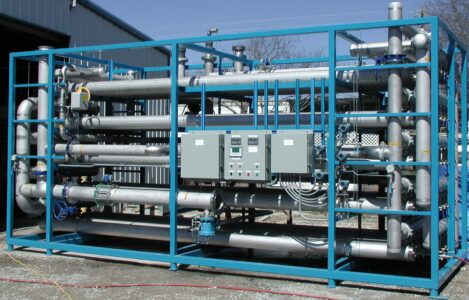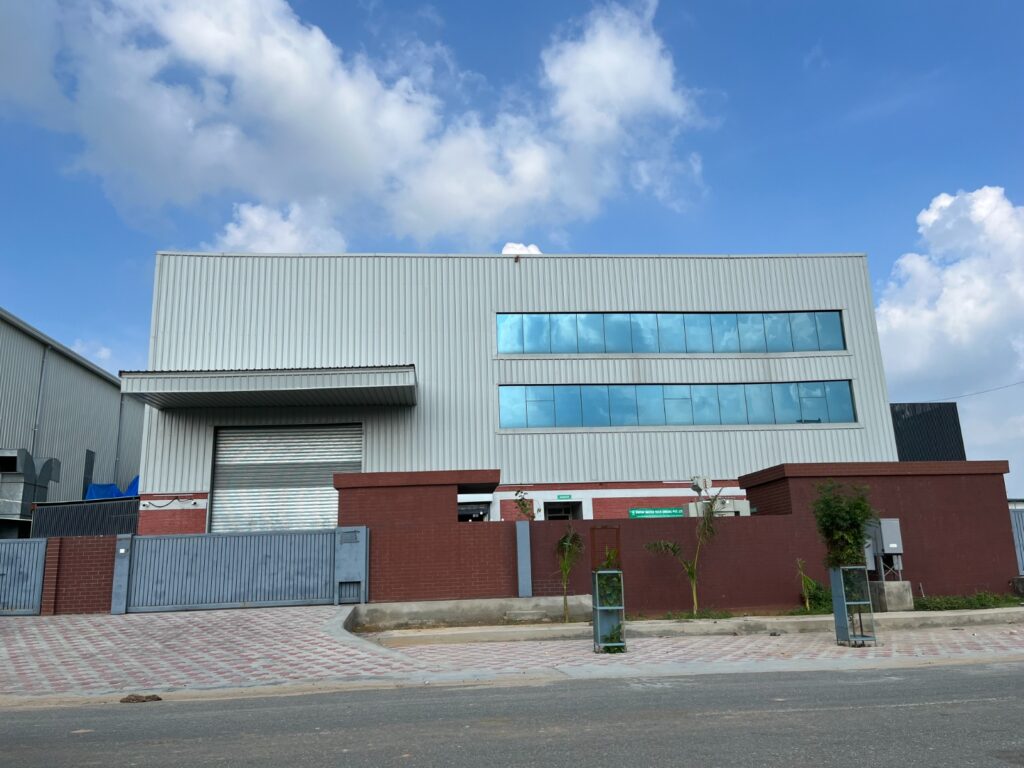Solutions
Reverse Osmosis System
Reverse osmosis (RO) is a widely used water treatment process that employs a semi-permeable membrane to remove a wide range of contaminants from water. It operates on the principle of applying pressure to overcome osmotic pressure and force water molecules through the membrane while rejecting dissolved solids, particles, and impurities.
Here’s an overview of the reverse osmosis process in water treatment:
- Pre-Treatment: Before entering the reverse osmosis system, water undergoes pre-treatment processes to remove larger particles, sediment, chlorine, and other substances that may damage or foul the RO membrane. Pre-treatment can involve sediment filtration, activated carbon filtration, and disinfection.
- Semi-Permeable Membrane: The heart of the reverse osmosis system is the semi-permeable membrane, which consists of thin layers of specialized material with extremely small pores. The membrane acts as a barrier, allowing water molecules to pass through while rejecting dissolved solids, ions, and larger particles.
- Pressure Application: Water is pressurized and forced against the membrane, causing the water molecules to pass through the membrane’s small pores. This pressure must exceed the osmotic pressure, which is the force that holds back the natural flow of water from a solution with lower solute concentration to one with higher solute concentration.
- Removal of Contaminants: As water molecules pass through the membrane, contaminants such as dissolved salts, bacteria, viruses, heavy metals, and other impurities are left behind and are flushed away as reject or concentrate. The purified water that successfully passes through the membrane is collected as the permeate or product water.
- Concentrate Disposal: The concentrated stream containing the rejected contaminants, known as the brine or reject water, is typically discharged or further treated to minimize environmental impact.

Reverse osmosis systems offer several advantages in water treatment:
- High Purity Water: RO is capable of removing a wide range of contaminants, including dissolved solids, salts, microorganisms, and other impurities, resulting in high-purity water.
- Versatility: Reverse osmosis systems can be used in various applications, including drinking water production, desalination, industrial processes, and wastewater treatment.
- Efficiency: RO systems can operate at high recovery rates, meaning a significant portion of the feed water can be converted into purified water, reducing water wastage.
- Modular Design: RO systems are often designed in a modular configuration, allowing flexibility in capacity and easy scalability based on water demand.
Reverse osmosis has become a widely adopted technology for producing clean and purified water in both residential and commercial settings. Its effectiveness in removing contaminants makes it an essential component of many water treatment processes.

